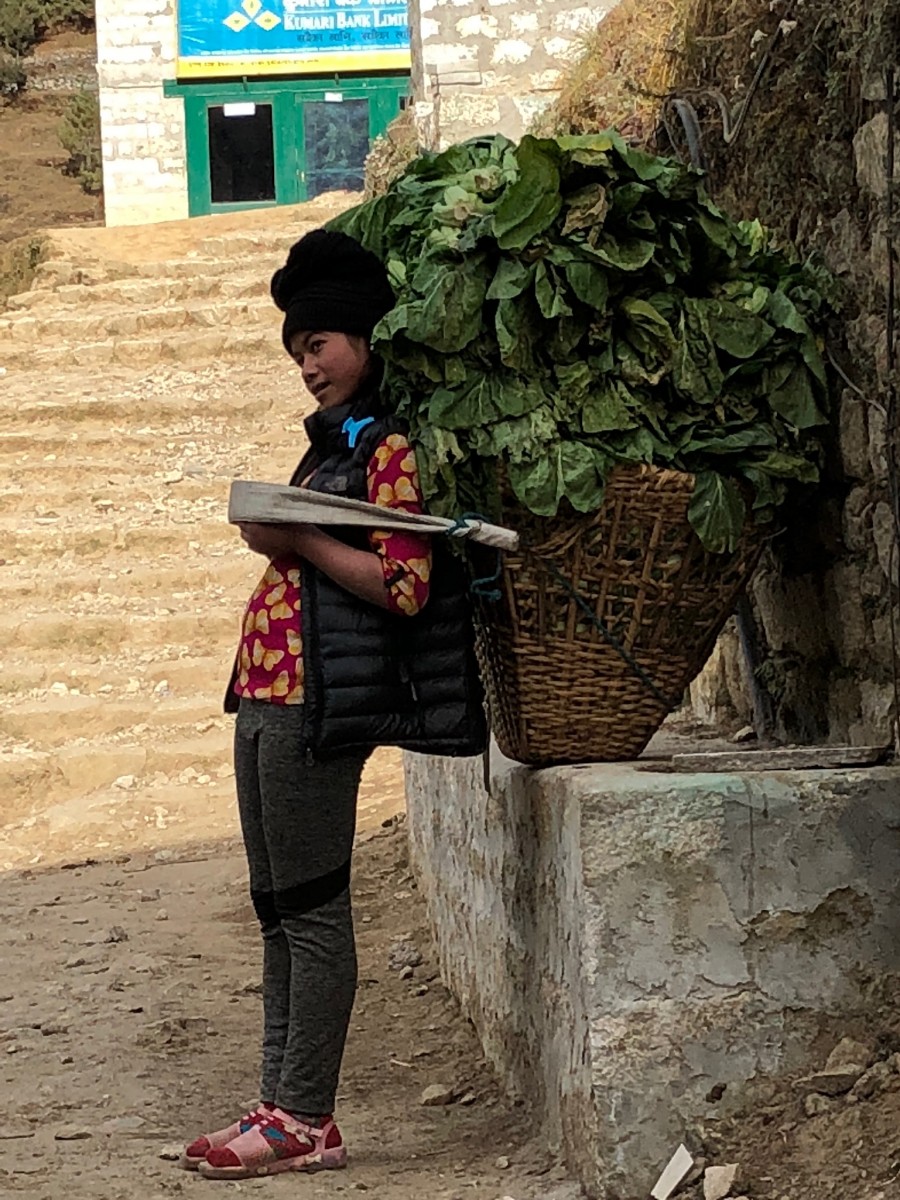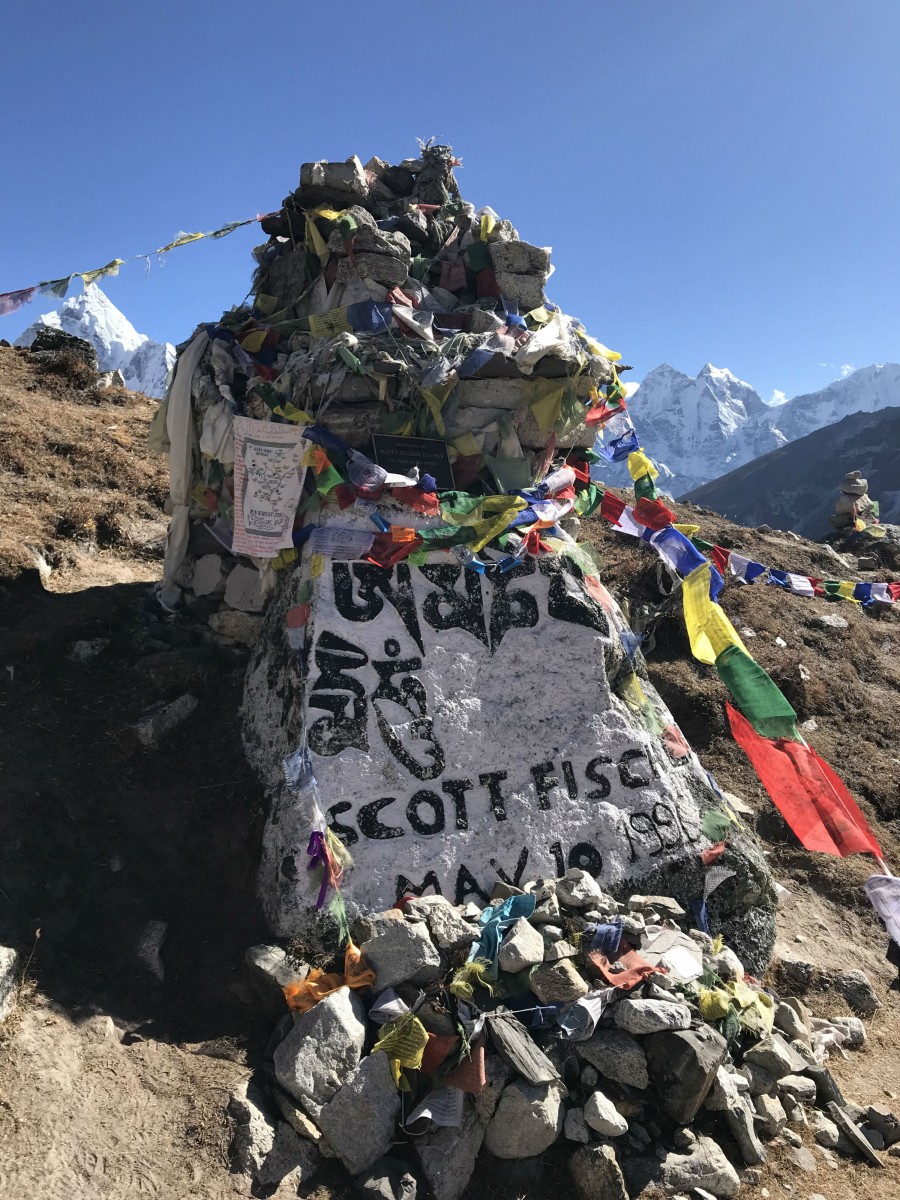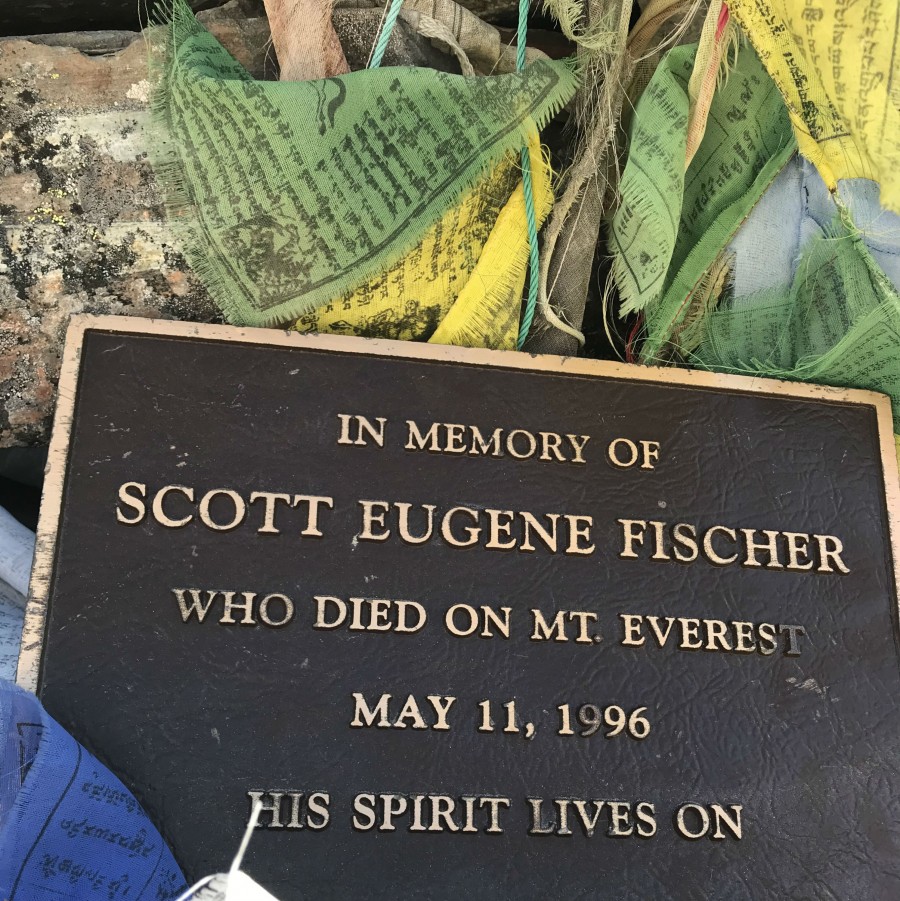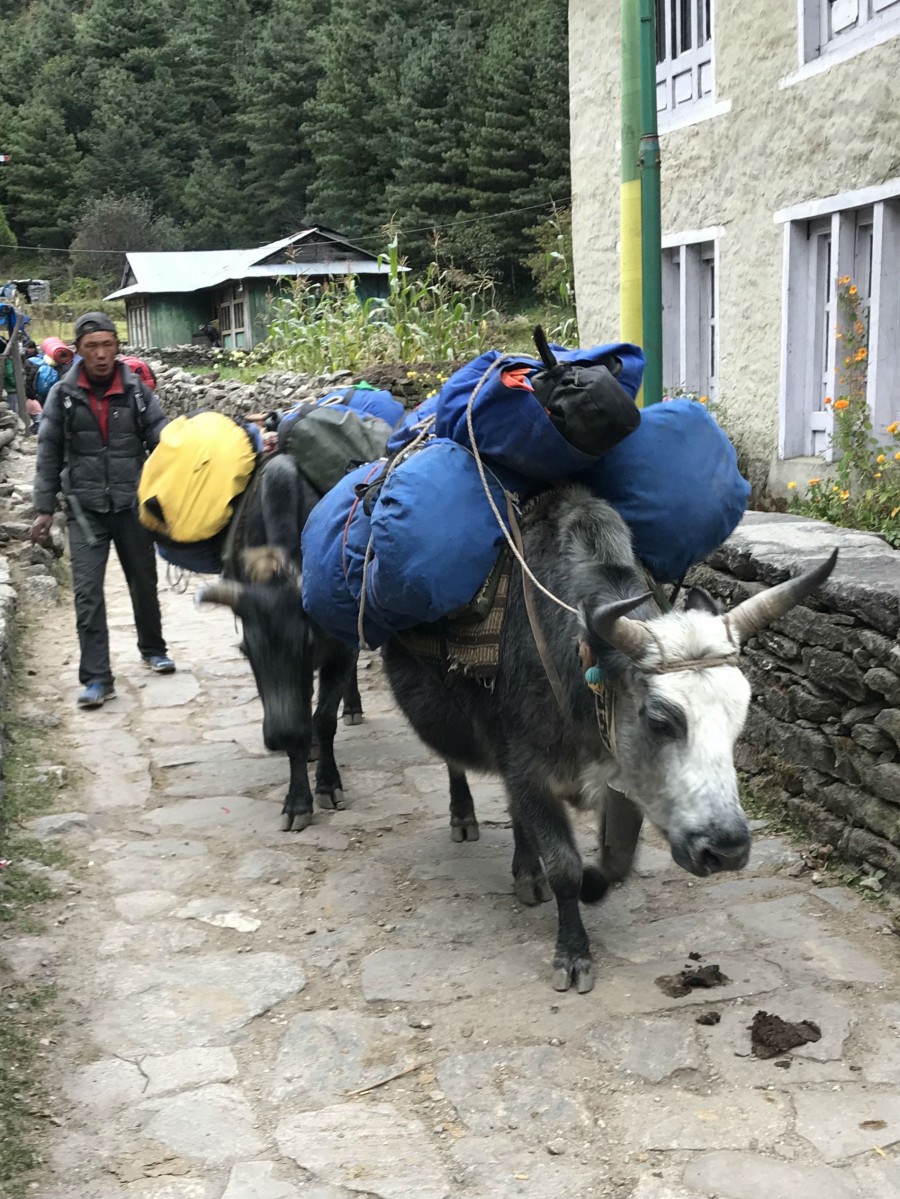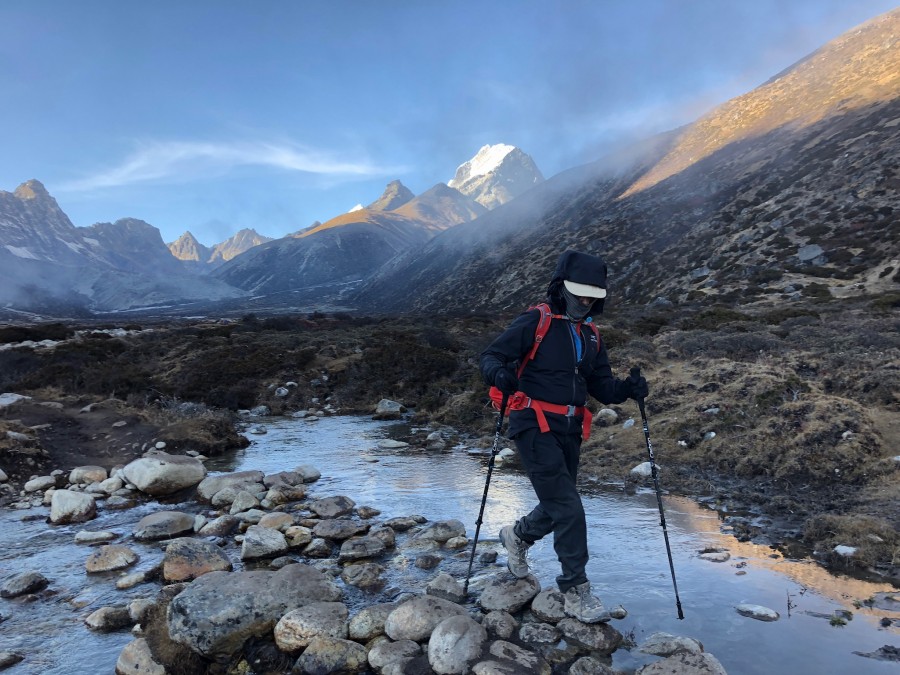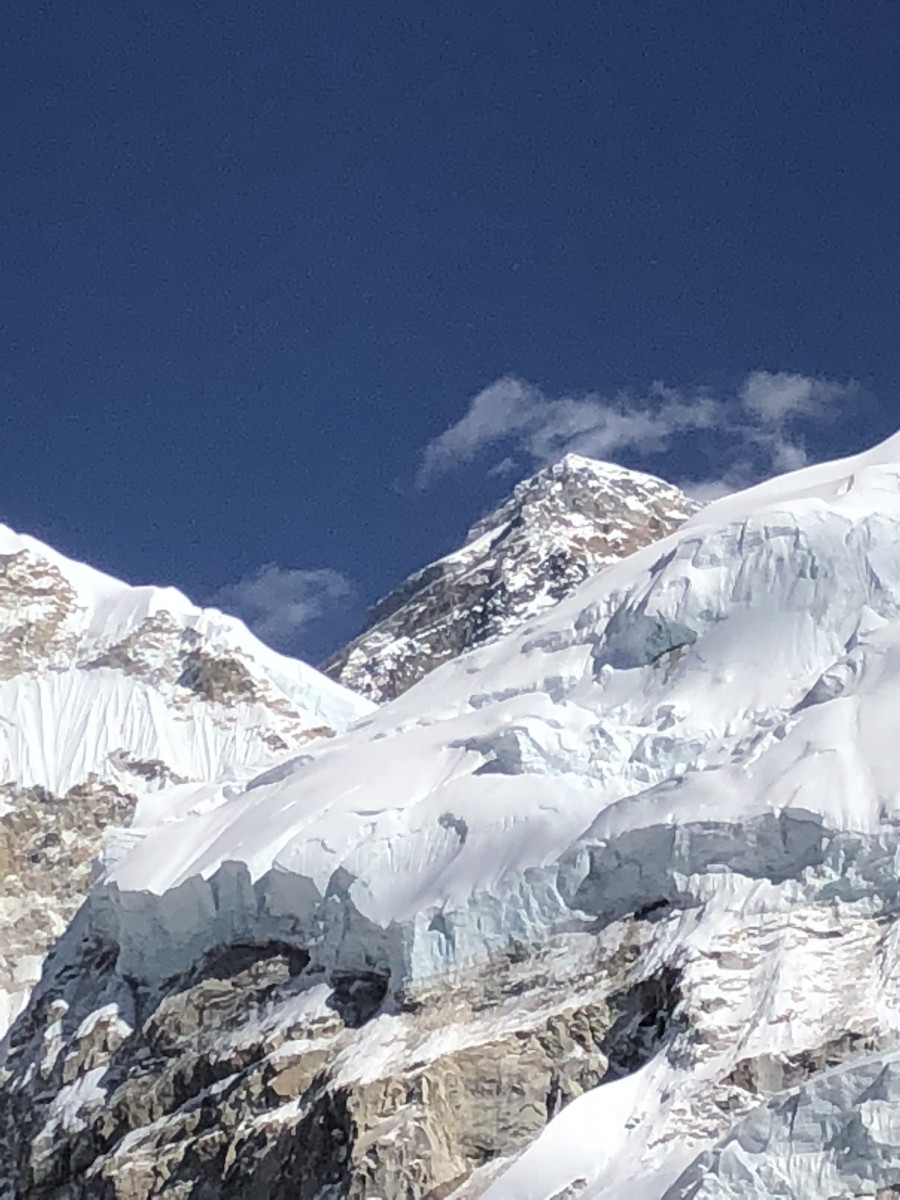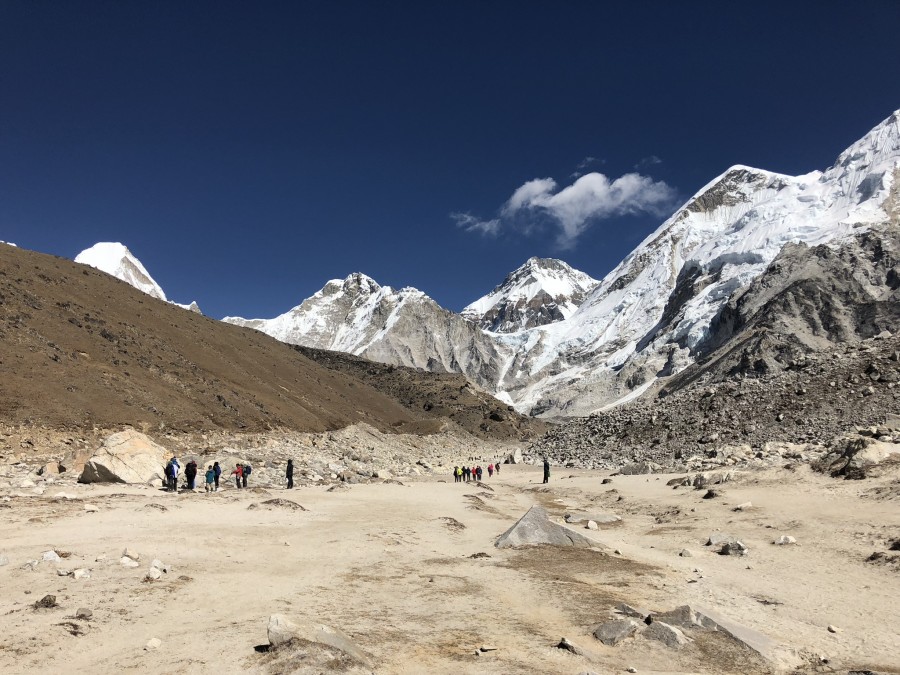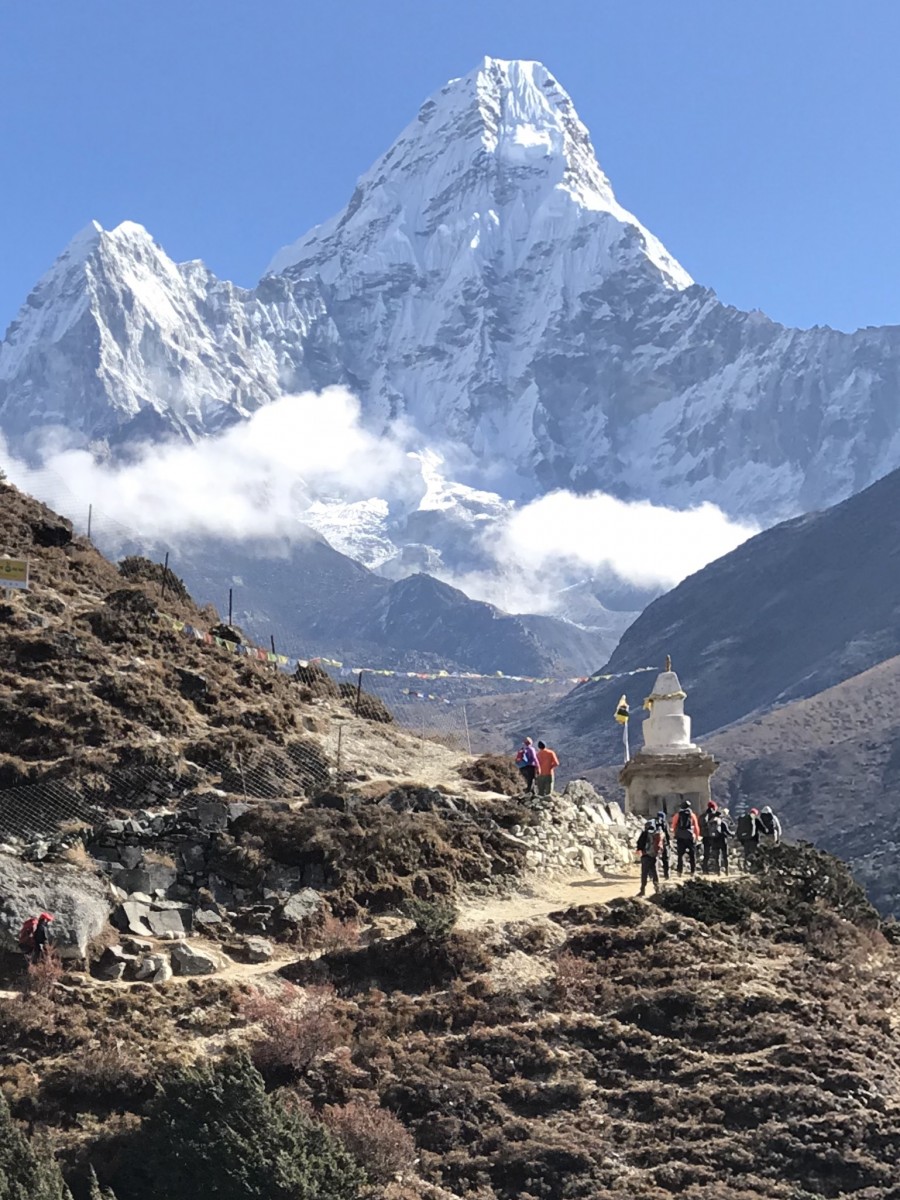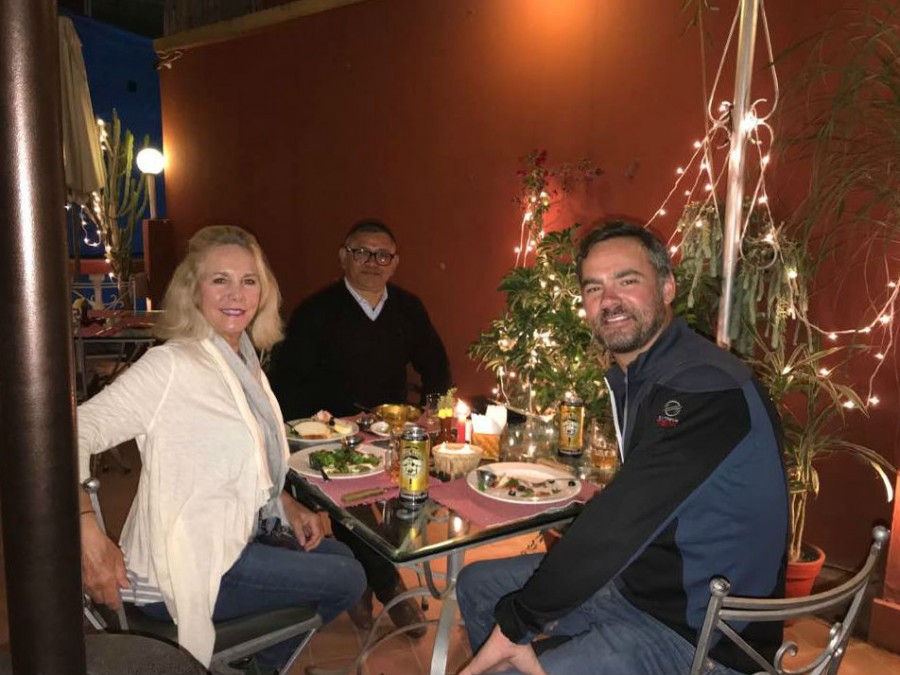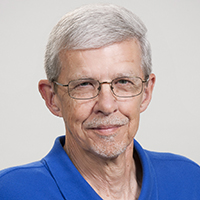A Gainesville woman recently experienced the adventure of a lifetime - scaling a portion of Mt. Everest, the tallest mountain in the world, at 29,029 feet.
Susan Smithson began her journey on November 2 when she left Gainesville. Two days later she was in Nepal, on the other side of the world. She was accompanied by her 37-year-old son, Eric.
Shortly after returning home, Smithson, 64, a tax advisor and real estate investor, answered a few questions about her adventure.
*Why Mt. Everest?
I have always been intrigued with Mt. Everest. I am a big hiker and love to do organized hikes to destinations that I probably would never travel to unless on a hike. Twenty years ago, I hiked to the summit of Kilimanjaro in Africa with my two sons. At the time they were 12 and 15. Last year I hiked the Inca Trail in Peru to Macchu Picchu with my daughter. So when I returned from that trip I started researching where my next adventure would be and decided on the hike to base camp of Mt. Everest. Because of hiking up Kilimanjaro at an altitude of 19,341 several years ago, I was pretty confident that I could get to the base camp of Mt. Everest at an altitude of 17,598.
*What did you do to prepare yourself for Mt. Everest?
There is no way to prepare for altitude hiking. I actually did some hiking at Mt. Yonah, Blood Mountain (two mountains in northeast Georgia), and on the Appalachian Trail and did hire a trainer for weight training for a short period which helped. I am always hiking, walking, playing tennis, etc., but you need to be in very good shape to handle a hike on this level. I don't know if you would ever feel completely ready. You mainly need an abundance of determination to complete a hike like this.
*So, how long were you in preparations for this - from the time you decided definitely "I'm going"?
I had mentally said to myself over a year ago that I was going to do the hike. So when I got back from Machu Picchu, I kept my exercise level up from that trip last summer. But I didn't definitely pull the trigger on the Everest hike until about two or three months before I went. That's when I hired the trainer and really starting working on some different things. As it turned out for me during the hike, I actually had no problems with my body as far as aches, pains, stamina. I was a slow hiker, but never felt like I wasn't going to make it.
*Why stop at the 17,598-foot mark? What not go all the way?
I would never have any desire to go any further up Everest than I did. Having done this hike, I can certainly understand how that would get in your blood to do, if you were younger and in excellent shape. But after hiking to base camp, I have a real appreciation for what harsh conditions one would have to go through to accomplish that. Definitely not on my bucket list!
*Did you all just strike out on your own or were you with a group of like-minded people from all over the country or the world?
Eric and I had our own trekking guide, Gyan, who had actually summited Everest twice, so he was very knowledgeable about the hike. We also had a porter who carried our bags. I planned it that way on purpose because I had originally booked the trip for just me to go. I definitely wanted to be on my own pace, and I had a very definite time period that I needed to be gone, so just figured it was easier doing my own thing. As luck had it, Eric was able to join me at the last minute and that really made my trip. When you hike the Everest base camp hike, you are around people all the time. We started getting to know lots of the groups, big and small, that we would keep seeing -.either staying at the same tea houses, taking the same rest stops, or at lunch breaks. So it was really the best of both worlds. It was a very diverse group of people. Not many Americans, but many other countries were represented on the trail.
*What are tea houses?
Tea houses are like very small hotels in the villages where you can sleep and get a meal. Most people stay in the tea houses instead of camping. Some are very nice. Others are basic. The higher you would get to base camp, the more basic they became.
*How long did the journey up the mountain take?
Once we started the hike, we were on the trail for 12 days.
*How may days each way?
The hike was eight days up to base camp and four days down. Going back was as hard or harder, because we were walking more miles and for some reason, our guide took us on a different way back that had a lot of uphill to it. Go figure. You think it would have been downhill, but not! It was as tough getting back as going up.
*What was the weather like on the mountain?
The weather during the day was just spectacular. We would always be cold in the mornings, but it would quickly warm up. We really just had "blue bird" days of not a cloud in the sky. Great hiking weather with spectacular views. Pictures do not do justice to just how magnificent the beauty of the Himalayas is. The closer we got to base camp, the colder it got. Much colder than I had imagined at night. It was brutally cold in the tea houses. The only room that was heated was the main gathering room where we ate. The sleeping rooms were not heated. That part was tougher than I had ever imagined. One morning I woke up to a frozen water bottle next to my bed.
*Walk us through the steps leading up to departure (up the mountain)? Were there any special instructions from those who would be guiding you?
The biggest issue I think was we just had to make sure that our weight in our bags was not over thirty pounds and they were very strict about that. One porter carried both of our bags, so he could not be overloaded. Also, drinking purified water was a very big deal, and we always had to make sure we had enough to get us to the next stop. And of course, before we even left the states, we had to have a long list of shots and medications with us, as well as a very concise list of items to take with us. It's not an easy trip to pack for.
*Do climbers going only to the base camp have to rely on a supply of oxygen like they do when they push on to the summit?
No you do not have to rely on oxygen at that point. It is definitely hard to breathe, especially when you are hiking up hill. I guess if you got in trouble with the altitude they would probably try to give you some oxygen and, of course, get you back down to a lower altitude. We saw some really sick people towards the end that were having some serious issues. Helicopters are constantly evacuating people. The helicopters would run all day long.
*A lot of people have died climbing Mt. Everest. Is that something that is downplayed and not talked about by the guides and others?
No, it is not ignored. One of the neatest areas we hiked through was a memorial area to all the hikers that have died trying to summit and whose bodies have been recovered. We saw the memorials to Scott Fischer and Rob Hall (the guides that were written about in the book, "Into Thin Air"), as well as many others.
*Once you started were there any thoughts about turning around and not completing the hike?
No. I would have never turned around unless I physically could not have done it. Obviously, you have to listen to your body because it can be very dangerous to try to hike through altitude problems. Towards the end, I would really start dreading the nights because I knew I was hiking toward a very cold place to sleep and was not looking forward to trying to eat rice or noodles again. But I was committed to finishing, of course. There was no turning back talk at all!
*What were your overall impressions of Nepal and its people?
A unique feel to that area of the world - constantly sharing the trail with yaks and donkeys, passing all the Buddhist temples, prayer wheels, prayer flags, and all the suspension bridges. Those bridges were quite exciting to hike over. In the little villages you would pass through (along the trail to base camp), you felt completely safe and I was just so impressed with how hard all the Nepalese worked everyday. From early morning, everyone was up working hard on some task. We hiked the first part of the trail along the raging Imja Khola river, .a beautiful river that had icy, blue water. Then as we got higher we hiked along the Khumba glacier that stretches 12 miles. It was stunningly beautiful.
*Was it all worth it?
Yes, it was worth it. I am so proud of myself for doing it. I was definitely out of my comfort zone, but that just makes the sense of accomplishment that much better for me.
*Would you do it again?
Yes! But it's definitely not for the light hearted hiker! I am just thrilled to know that I have been to Nepal and seen Mt. Everest in the way that only a few people ever do. I will always cherish those memories of this trip.
*What's next? What mountain would you next like to conquer?
I do not have another specific mountain hike planned at this point. There are many other areas of the world I would like to hike such as Patagonia or Switzerland. Maybe that will be the next one!
(Click on the accompanying picture to view a photo gallery of Smithson's adventure.)






